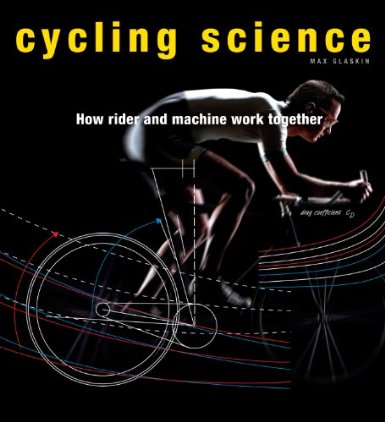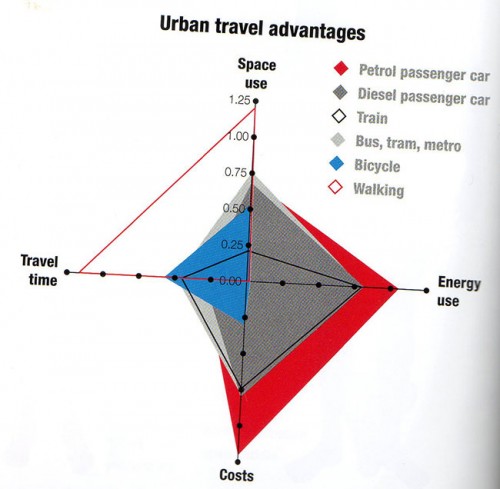 Cycling Science is a book with lots of data and investigation into the science behind cycling – aerodynamics, power, stability, materials. I was sent a free review copy by Frances Lincoln publishers and quite enjoyed reading it. Firstly, the cycling book market is quite crowded. It’s always hard to come up with something new, Cycling Science has quite a few pages where I learnt some new stuff. Secondly, led by the squirrels and boffins at British Cycling and Team Sky, cycling does seem to be putting more emphasis on the science behind the sport. It’s not enough these days to say ride on feel or just get the miles in – we’ve all become interested in the actual science behind the cycling. Whether this is a good thing or not is another matter. (By strange co-incidence I finally moved into the modern world and ordered a power meter. After years of resisting to part with money in my wallet, I will now be able to bore my readers with average power outputs on my blog. At the very least, I won’t feel lost in the post race power output discussions – but I digress)
Cycling Science is a book with lots of data and investigation into the science behind cycling – aerodynamics, power, stability, materials. I was sent a free review copy by Frances Lincoln publishers and quite enjoyed reading it. Firstly, the cycling book market is quite crowded. It’s always hard to come up with something new, Cycling Science has quite a few pages where I learnt some new stuff. Secondly, led by the squirrels and boffins at British Cycling and Team Sky, cycling does seem to be putting more emphasis on the science behind the sport. It’s not enough these days to say ride on feel or just get the miles in – we’ve all become interested in the actual science behind the cycling. Whether this is a good thing or not is another matter. (By strange co-incidence I finally moved into the modern world and ordered a power meter. After years of resisting to part with money in my wallet, I will now be able to bore my readers with average power outputs on my blog. At the very least, I won’t feel lost in the post race power output discussions – but I digress)
Some interesting titbits from Cycling Science.
- A walker moving a a particular speed could, if they rode a bike, travel three times faster without having to increase their effort at all, because the two-wheeled machine is so efficient. There are two reasons for this.
1. The way the bike is configured to make use of bodies (bike converts 98.6% of energy into spinning wheels)
2. The machine acts as a lever
- Researchers in Netherlands studied four elements of urban journeys. The greater the distance from the centre of the graph, the worse the score.

- The space-use figure was calculated by dividing area of infrastructure by annual distance travelled.
- The costs were just to person travelling, not cost of infrastructure (or external costs)
- Cycling is only marginally slower, yet significantly cheaper and more energy thrifty.
- Manfred Nuscheler of Switzerland produced 2,378 watts of power for five seconds on a static roller bike
- A bicycle can stay upright without a rider as long as it is moving at a speed of about 14 km/h (8.7mph)
- As he was preparing for world hour record bid in Mexico in 1972, Eddy Merckx, decided he wanted helium in his tyres because it would cut weight by approx 14g. But according to his bike builder, Ernesto Colnago he couldn’t get any! Eddy Merckx hour record bike was nearly 2 kgs lighter than later records, such as Miguel Indurain and Chris Boardman’s
The book answers questions, such as:
- Why do some frames have porky tubes?
- What sticks my frame together?
- What’s so special about Carbon bikes?
- What will make me go faster?
- What power requirements do you require for different torso angles?
- How does counter- steering work?
If you’re interested in the science behind these questions, you may like the book. It’s a decent piece of research with good diagrams and pictures. It would make quite a good gift for a keen cyclist. It is more geared towards a racing cyclist, with much of the science geared towards aerodynamics and power.
Cycling Science at Amazon.co.uk £15.99

> How does counter- steering work?
I’ve heard of this in connection with motorcycles but never thought it might be useful for bicycles. Might be an interesting topic for a future blog post (how to do it, benefits, etc.)?